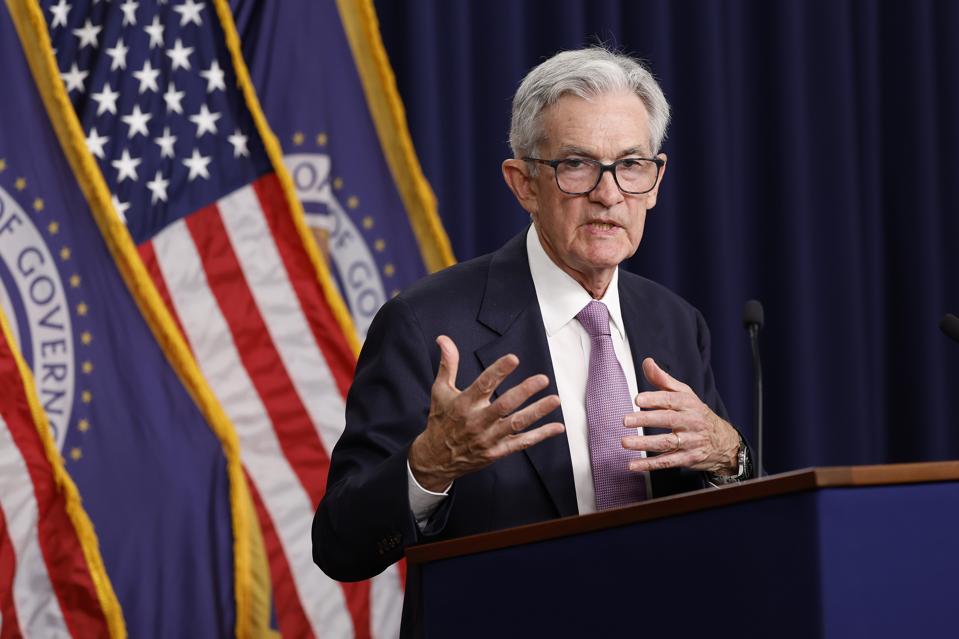If you want a clean read on where the Federal Reserve is likely headed this week and for the rest of the year look beyond punditry and into markets that put money behind opinions. Three venues tell the story: the fixed-income market (via CME’s FedWatch), crypto-native prediction platforms like Polymarket, and regulated event markets such as Kalshi. Together they’re sending a remarkably consistent message ahead of the October 28–29 FOMC meeting: a quarter-point cut is all but locked in, and a second cut in December is the base case.
As of October 27, the CME FedWatch tool derived from 30-Day Fed Funds futures implies a roughly 98% probability that the Fed trims the policy rate by 25 basis points this week. That would lower the target range from 4.00%–4.25% to 3.75%–4.00%, extending September’s first cut of the year and marking a clear pivot toward easier policy. Media using FedWatch typically attribute the probabilities directly; investors should too, because this is the market’s synthesized view of millions of dollars of positioning.
On the prediction-market side, Polymarket’s dashboard mirrors that conviction. Traders there price a ~98% chance of a 25-basis-point cut on October 29, with near-zero odds on either a surprise hold or anything larger. While these markets are small compared to Treasuries, their incentives are brutally simple: get the call right or lose money. When the crypto bettors line up with the futures market, it’s a useful confirmation signal. (Polymarket)
Kalshi an SEC-regulated event market shows a similar narrative and adds a helpful path perspective. After September’s move, Kalshi traders quickly repriced the rest of 2025, concentrating on a two-cut scenario (October and December) and leaving a tail for only one more cut or, less likely, a larger November–December adjustment. In mid-September, Kalshi commentary noted even odds for exactly three cuts in 2025; today, the market focus has narrowed to two cuts with a small chance of “more than 25 bps” before year-end. Translation: policy easing, but not a panic.
Why the sudden unanimity? Two forces. First, the labor market has cooled enough to give the Fed cover to prioritize the “maximum employment” side of its mandate without declaring victory on inflation. Second, the government data flow has been choppy in October, but alternative indicators and prior releases still point to slower growth alongside inflation that remains above target but trending less sticky at the margin. Even sell-side forecasters who dragged their feet earlier in the year have moved up their timelines: Bank of America, for example, shifted its next-cut call from December to October. Markets listened.
So what should investors actually do with this information?
1) Expect a gentler front end and a steeper curve if the soft landing holds. A 25-bp cut reduces funding costs for floating-rate borrowers and nudges front-end yields lower. If growth stabilizes into early 2026, the back end may prove stickier, creating mild steepening constructive for financials (net-interest margins) and for cyclicals with heavy short-term funding needs. But don’t confuse “easier” with “easy.” The expected year-end range (3.50%–3.75% by December, per implied probabilities) would still leave policy restrictive versus pre-pandemic norms. Position sizes should reflect that nuance.
2) Watch the December dot and the press conference tone. Prediction markets price events; the Fed prices a narrative arc. If Chair Powell signals that cuts are “not on autopilot,” markets may lean back toward a one-and-done outcome this year with optionality for March. Conversely, any acknowledgment that disinflation progress is broadening would harden the two-cut base case and pull forward 2026 easing expectations. The calendar matters here: December is an SEP meeting with fresh dots.
3) Credit could re-rate faster than equities. Lower policy rates relieve pressure on floating-rate borrowers and can compress credit spreads before earnings estimates move. Within equities, balance-sheet quality and duration still matter. Long-duration growth stocks often enjoy lower discount rates, but if the curve steepens on “better growth,” value and small-mid cyclicals may lead on a relative basis. Use the meeting-day volatility to rebalance toward your risk budget rather than chase the first move.
4) The biggest risk to the consensus isn’t a surprise hike it’s a communications miss. With odds this one-sided, the market is hypersensitive to how the Fed frames the cut. A “hawkish cut” (emphasizing caution, lingering inflation, and data dependence) could lift the dollar and leave financial conditions little changed. A “dovish cut” (framing growth risks and a bias to continue) could ignite a year-end reach-for-risk. Prediction markets can’t tell you tone in advance, but they do price the binary outcome. Use them as guardrails, not a GPS.
5) Beyond October: a glide path, not a cliff. Futures and prediction markets imply that by early 2026 the policy rate lands modestly lower than today but not back to the zero-rate world. For portfolio construction, that argues for barbell fixed-income (blend high-quality duration with selective credit beta), a tilt toward cash-flowing equities, and a renewed look at rate-sensitive alternatives (e.g., real assets with contractual escalators). Re-run your hurdle rates: 2026 may look more like 2016 than 2021.
One final note on reading these tea leaves. The smartest approach triangulates: use CME FedWatch for the institutional base case, Polymarket for a fast-moving crowd read, and Kalshi to interrogate specific paths (How many cuts? By when?). When all three hum the same tune, your job isn’t to out-guess them it’s to prepare the portfolio for the second-order effects. This week, those effects point to cheaper short-term money, a debate about December, and a high premium on the Fed’s forward guidance.

